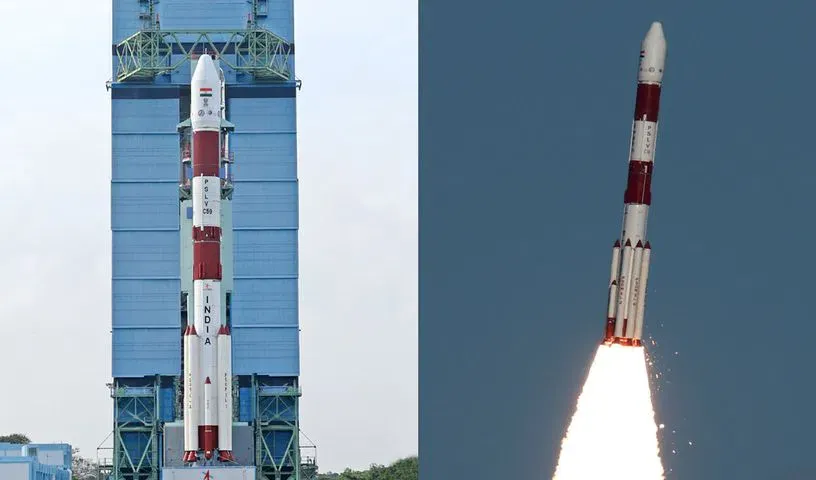
Date: December 05, 2024
ISRO’s PSLV-C59 Successfully Launches Proba-3 Mission
ISRO’s PSLV-C59 Successfully Launches Proba-3 Mission for Solar Study
In a remarkable achievement, ISRO successfully launched the Proba-3 mission onboard its PSLV-C59 rocket, advancing solar research and international space collaboration. This mission, led by the European Space Agency (ESA), aims to study the Sun’s outer atmosphere using twin satellites that will fly in precision formation.
Mission Overview: Proba-3 and its Objectives
The Proba-3 mission, which stands for Project for Onboard Autonomy, involves two spacecraft—Coronagraph and Occulter—designed to fly together in a precise formation. The two satellites, placed into orbit 18 minutes after lift-off, will maintain a distance of just 150 meters. This formation will allow the Occulter spacecraft to block the Sun’s disk and enable the Coronagraph to observe the Sun’s corona, or outer atmosphere, for in-depth scientific analysis.
The satellites were placed into a high elliptical orbit, with a perigee (closest point to Earth) of nearly 600 km and an apogee (farthest point from Earth) of 60,000 km, an orbit previously not achieved by PSLV rockets. This marks a milestone in ISRO’s journey toward precision space exploration.
PSLV-C59: Precision and Performance
The PSLV-C59 rocket, on its 61st flight, successfully launched from Sriharikota and deployed the two ESA satellites into their intended orbit. ISRO Chairman S. Somanath celebrated the mission’s success, noting that the precision placement of the satellites reflects the growing capabilities of India’s PSLV program. This mission also underscores ISRO’s critical role in enabling global space innovation and supporting ESA’s goals in solar research.
Proba-3: Advancing Solar Research
The Proba-3 mission will take solar coronagraphy to new heights, enabling continuous observation of the Sun’s corona by simulating solar eclipses at will. Unlike the brief solar eclipses visible from Earth, the Proba-3 mission will allow scientists to study the corona’s structure and behavior over extended periods. The Sun’s corona is of immense scientific interest because it is significantly hotter than the Sun itself and is the source of space weather phenomena.
The satellites will operate in tandem, with the Occulter spacecraft blocking the Sun’s disk while the Coronagraph studies the resulting shadow. This formation flying technology will also contribute to future space missions that require precise positioning of satellites.
ISRO’s Role in International Space Collaboration
ISRO’s partnership with the European Space Agency (ESA) through this mission showcases the strength of international space collaboration. This launch is particularly special as it marks the first time that PSLV has deployed a payload into such a high elliptical orbit.
Additionally, NewSpace India Ltd (NSIL), the commercial arm of ISRO, was responsible for facilitating the launch, further demonstrating India’s growing role in global space activities.
Looking Ahead: Insights from Aditya-L1 and Proba-3
This successful launch of Proba-3 comes closely on the heels of ISRO’s Aditya-L1 mission, which is focused on solar exploration. Together, these missions will provide critical insights into solar science, contributing significantly to our understanding of space weather and its impact on Earth. ISRO’s commitment to advancing solar research continues to position India as a key player in global space science.
The PSLV-C59 mission’s success is a significant step forward for both ISRO and the European Space Agency, marking a new chapter in solar research and precision space missions. As Proba-3 continues its journey, it will bring invaluable insights into the Sun’s corona and contribute to the advancement of space science and technology.